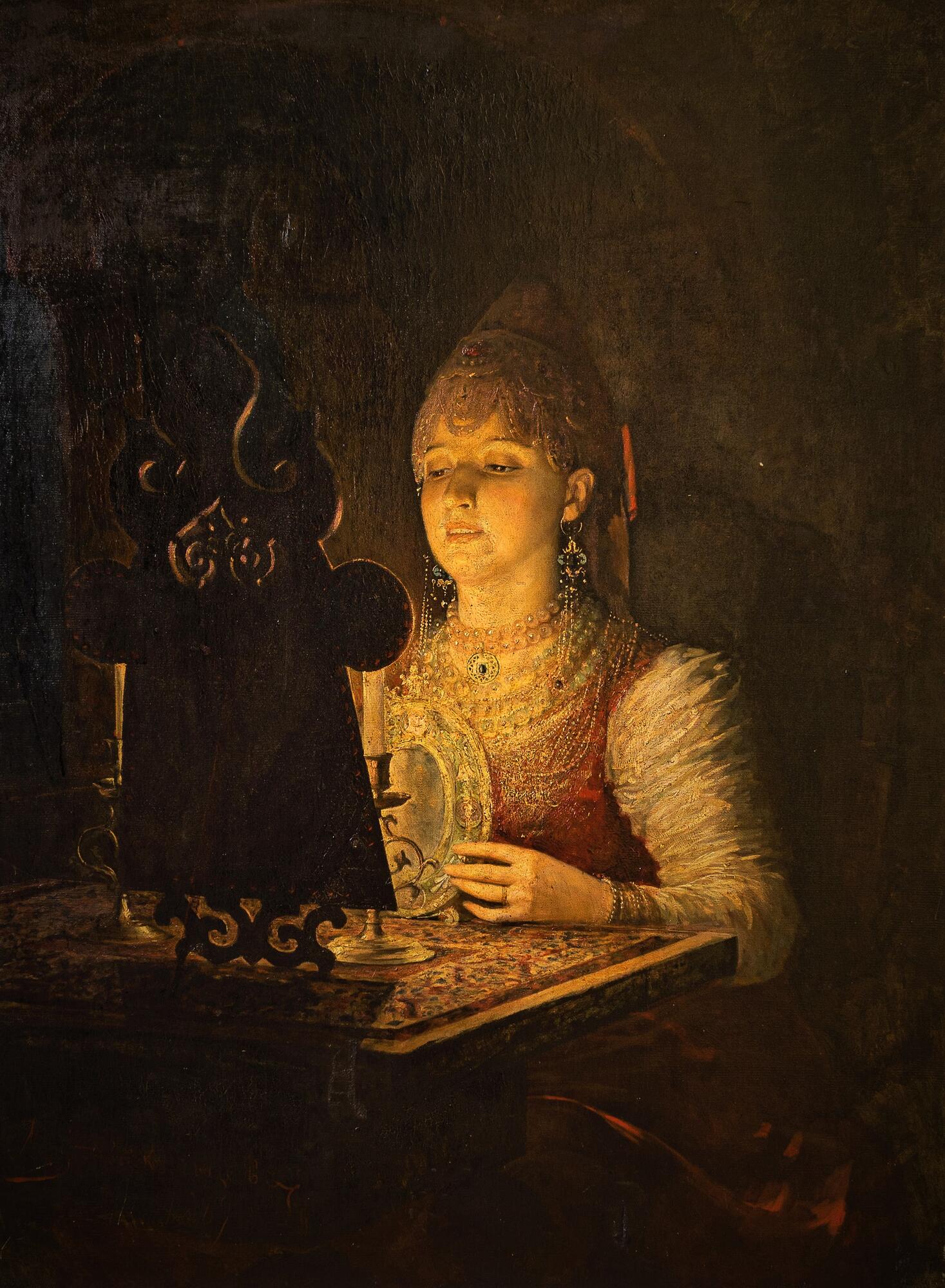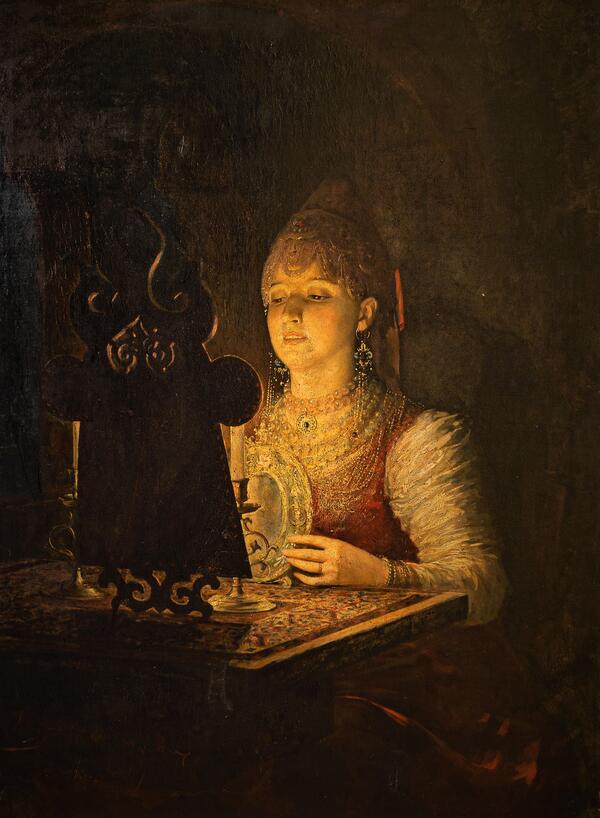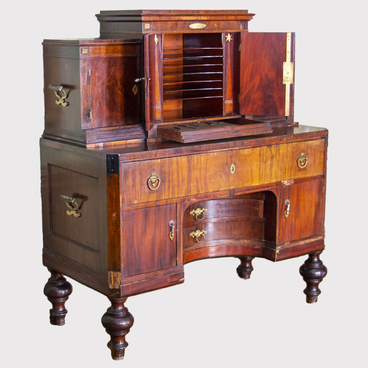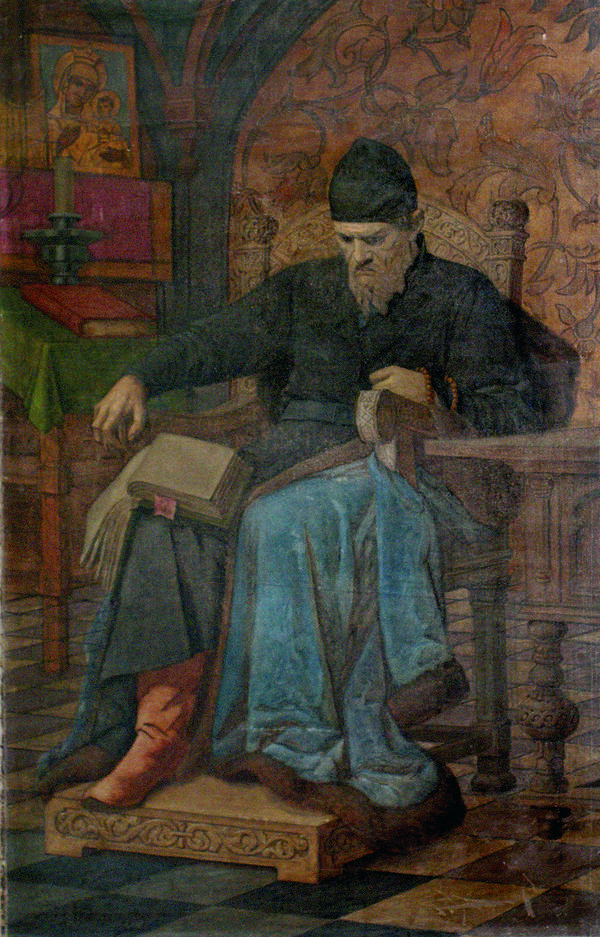Fortune telling was one of the main entertainments during Christmastide. This was the name of the holidays that lasted ‘from the star to the water’ — from Christmas to the Epiphany Day. It was believed that during that time the boundaries between the world of people and spirits were blurred, and it was possible to ask the spirit world any question.
On Christmastide, people told fortunes mostly for the future harvest and the important events of the coming year. Many girls with the help of evil spirits wanted to look into the future and find out who their future husbands would be.
Based on this custom, as well as partly on the plot of Gottfried Burger’s German romantic ballad “Lenore”, the poet and translator Vasily Zhukovsky wrote his ballad “Svetlana”. He dedicated it to his niece Alexandra Voyeikova and it was first published in 1813.
The heroine of the poem, Svetlana, at the suggestion of her friends, decides to tell fortunes to find out the fate of her fiance, from whom she had no news for a year. The groom answers the call and takes Svetlana to the wedding, which turns out to be a funeral rite. Svetlana realizes that her groom is a dead man, and wakes up.
The artist Alexander Novoskoltsev painted the picture “Svetlana” in 1889. On the canvas, he depicted a young woman in a traditional Russian costume — a red sundress, worn over a white shirt.
In a dark room lit by two candles, the young woman is engaged in telling fortunes. She holds a small oval mirror in her hands and points it at a large mirror in a carved wooden frame. In the olden days, it was believed that if one looked close enough, the groom would be seen in the endless corridor of reflections.
This work can be attributed to the genre art. As one of the independent types of fine art, it began to develop quite late — in the second half of the 19th century, when realism replaced classicism and romanticism. Often the characters of genre paintings were ordinary people — peasants, petty-bourgeois, artisans who were engaged in everyday affairs.
The artist Alexander Novoskoltsev, a master of the genre art, was born in 1853 in the Voronezh governorate. He studied at the Moscow School of Painting, Sculpture, and Architecture, and then entered the life class of the St. Petersburg Academy of Arts. For the painting “St. Sergius Blesses Dmitry Donskoy for Battle and Sends Two Monks with Him”, created in 1882, he received a large gold medal and the title of the first-degree class artist.
In the same year, Alexander Novoskoltsev traveled to Europe. Some of his works of that time became the property of Grand Duke Vladimir Alexandrovich, President of the Academy of Arts.
In 1889, Novoskoltsev received the title of academician for the painting “The Last Minutes of Metropolitan Philip”. In addition to the genre paintings, he made sketches for temple mosaics, as well as created icons and paintings on religious themes.
On Christmastide, people told fortunes mostly for the future harvest and the important events of the coming year. Many girls with the help of evil spirits wanted to look into the future and find out who their future husbands would be.
Based on this custom, as well as partly on the plot of Gottfried Burger’s German romantic ballad “Lenore”, the poet and translator Vasily Zhukovsky wrote his ballad “Svetlana”. He dedicated it to his niece Alexandra Voyeikova and it was first published in 1813.
The heroine of the poem, Svetlana, at the suggestion of her friends, decides to tell fortunes to find out the fate of her fiance, from whom she had no news for a year. The groom answers the call and takes Svetlana to the wedding, which turns out to be a funeral rite. Svetlana realizes that her groom is a dead man, and wakes up.
The artist Alexander Novoskoltsev painted the picture “Svetlana” in 1889. On the canvas, he depicted a young woman in a traditional Russian costume — a red sundress, worn over a white shirt.
In a dark room lit by two candles, the young woman is engaged in telling fortunes. She holds a small oval mirror in her hands and points it at a large mirror in a carved wooden frame. In the olden days, it was believed that if one looked close enough, the groom would be seen in the endless corridor of reflections.
This work can be attributed to the genre art. As one of the independent types of fine art, it began to develop quite late — in the second half of the 19th century, when realism replaced classicism and romanticism. Often the characters of genre paintings were ordinary people — peasants, petty-bourgeois, artisans who were engaged in everyday affairs.
The artist Alexander Novoskoltsev, a master of the genre art, was born in 1853 in the Voronezh governorate. He studied at the Moscow School of Painting, Sculpture, and Architecture, and then entered the life class of the St. Petersburg Academy of Arts. For the painting “St. Sergius Blesses Dmitry Donskoy for Battle and Sends Two Monks with Him”, created in 1882, he received a large gold medal and the title of the first-degree class artist.
In the same year, Alexander Novoskoltsev traveled to Europe. Some of his works of that time became the property of Grand Duke Vladimir Alexandrovich, President of the Academy of Arts.
In 1889, Novoskoltsev received the title of academician for the painting “The Last Minutes of Metropolitan Philip”. In addition to the genre paintings, he made sketches for temple mosaics, as well as created icons and paintings on religious themes.




